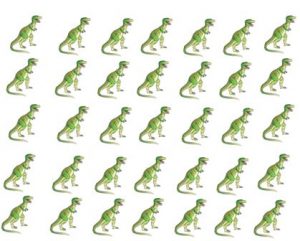Technology with its wide adoption and ease of use brings with it great opportunity but also presents a challenge to educators. Our ability to share ideas to a large audience is easier than ever and thus we find ourselves with the challenge of filtering false ideas from our students. Further, students arrive in our classrooms with their own experiences and misconceptions of ideas we are attempting to build on, challenging the educator to cover course content yet also ensure students are developing deep, meaningful learning.
Fosnot (2013) describes behaviorism and maturationism as two theories of learning that educators use to either help students understand concepts or determine when it may be appropriate for them to cover that material. Behaviorism, specifically reinforcement and practice, is a pedagogical approach many math teachers, including myself have used to develop student understanding of specific ideas. The problem arises if these methods of teaching are used to help students memorize procedures without any attempt to ask the question why?. The third theory, Constructivism, addressed this problem directly. It is a widely studied theory that states students construct their deep knowledge on a particular topic through experience and reflection. Further, the new knowledge is built on top of previous knowledge again demonstrating the importance of educators addressing student misconceptions early.
In our course video, we learned that regardless of their science education, twenty one of twenty three Harvard graduates had misconceptions about the phases of the moon and why we have seasons on earth. The video went on to focus on a grade 9 student, Heather, why had some interesting ideas on the same question. We saw that Heather had much of the terminology correct but didn’t fully understand what the terms meant (indirect and direct sunlight for instance). After classroom instruction on the topic, Heather was able to reverse some of her misconceptions but even after direct, one on one instruction, Heather was not willing to let go of some ideas she had formed.
We, as educators, have great resources at our disposal to help students develop deep understanding of our course content and curricular competencies. We have lesson videos such as Khan Academy and free graphing tools such as Desmos.com to allow students to manipulate equations and see the impact these manipulations have graphically. Accurate simulations are available for almost every subject area (I teach business education and there are a wealth of simulations available to educators) and are generally free to use. Ellis et. al. (2011) studied students experiences using technology in the science, math and history classes and found that students engaged highly (for different reasons depending on the subject) with the content. One of the findings was that students appreciated the wider range of answers they could find on the internet and thus potentially increasing the chances of developing a deeper understanding.
References
Constructivism: A Psychological theory of learning or Cobb, Paul. “Where is the mind? Constructivist and sociocultural perspectives on mathematical development.” Educational researcher 23, no. 7 (1994): 13-20. Available in the course readings library
Ellis, R., Goodyear, P., Bliuc, A., & Ellis, M. (2011). High school students’ experiences of learning through research on the Internet. Journal Of Computer Assisted Learning, 27(6), 503-515. doi:10.1111/j.1365-2729.2011.00412.x
Fosnot, C. T. (2013). Constructivism: Theory, perspectives, and practice. Teachers College Press.
